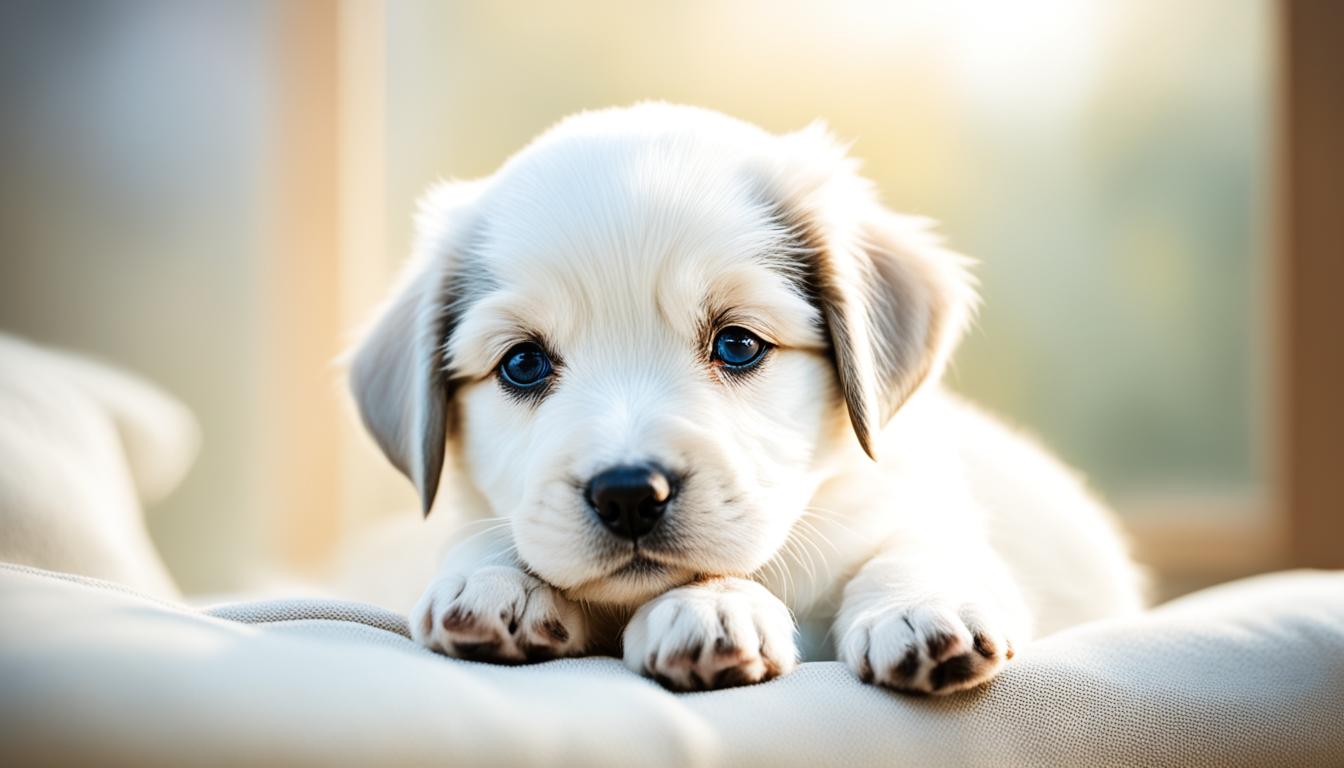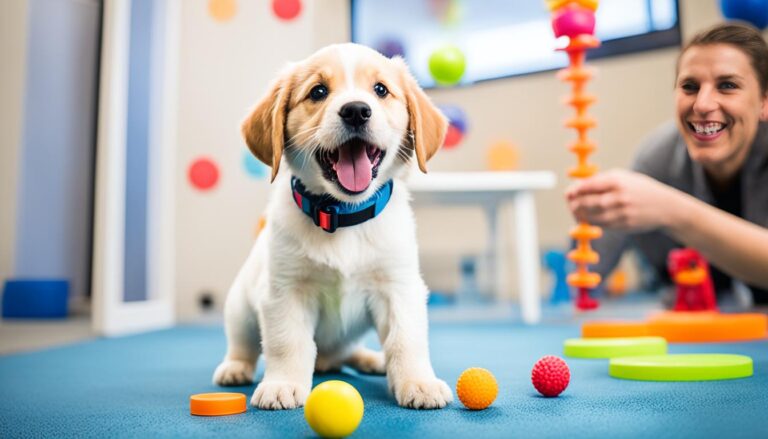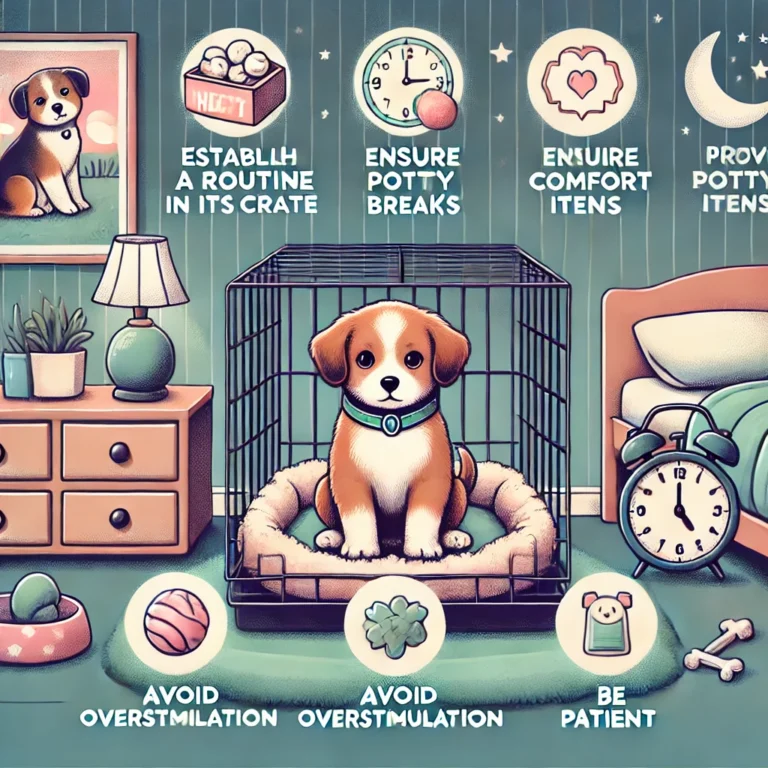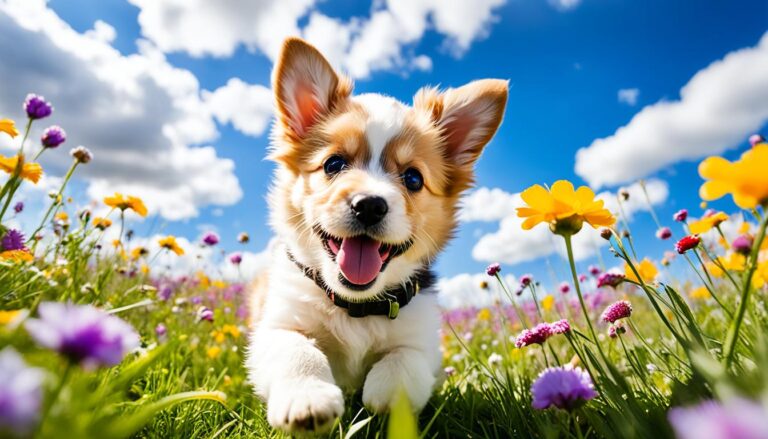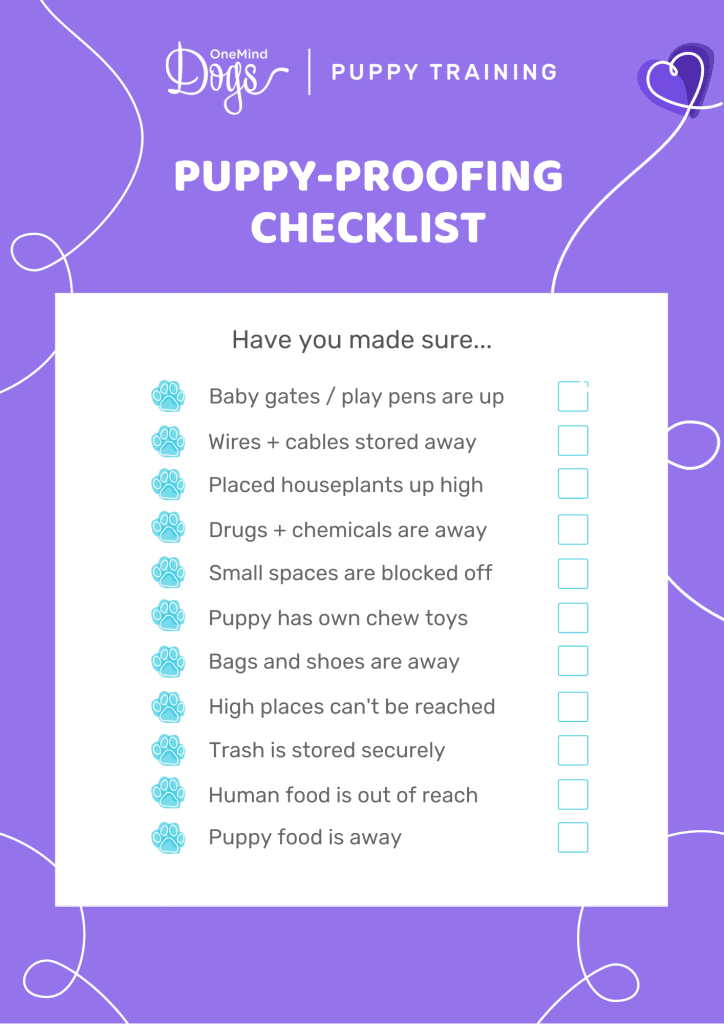How to Raise a Quiet Calm Puppy – Expert Tips
Welcome to our comprehensive guide on raising a quiet calm puppy. If you’re looking for effective strategies and techniques for calm puppy training, you’ve come to the right place. As experienced professionals in the field, we understand the importance of creating a serene environment for your puppy’s development. In this article, we will provide you with expert tips that will help you manage your puppy’s behavior and promote a calm and well-balanced demeanor in your home.
Key Takeaways:
- Implementing calm puppy training techniques is essential for shaping your puppy’s behavior.
- Identify the triggers that contribute to your puppy’s excitability and address them accordingly.
- Teach alternative behaviors to redirect your puppy’s energy in the moment.
- Use distractions and rewards to reinforce calm behavior in your puppy.
- Maintain a calm and composed demeanor yourself to set an example for your puppy.
Understanding and Managing Puppy Excitability
Puppies are known for their high energy levels and occasional bursts of excitement. However, excessive excitability can lead to unwanted behaviors such as zoomies, biting, and general hyperactivity. Effective puppy behavior management and calming techniques are essential to promote a calm demeanor in your furry friend.
To effectively manage your puppy’s excitability, it is important to understand the triggers that contribute to these episodes. Common triggers include tiredness, stressful events, new situations, frustration, and getting overly excited about something.
By identifying these triggers, you can proactively implement puppy calming techniques to help your puppy maintain a peaceful state of mind and reduce episodes of hyperactivity. Here are some strategies:
- Providing a calm environment: Create a serene space for your puppy by reducing noise, clutter, and potential sources of excitement.
- Establishing a routine: Establish a consistent schedule for feeding, exercise, and rest. This structure helps reduce stress and provides a sense of security for your puppy.
- Physical exercise: Engage your puppy in regular physical activities to channel their energy in a positive way. Daily walks, playtime, and interactive toys can help burn off excess energy.
- Mental stimulation: Mental exercises such as puzzle toys and obedience training help keep your puppy’s mind engaged and prevent boredom-induced hyperactivity.
- Gentle handling and socialization: Gradually expose your puppy to various environments, people, and animals in a controlled and positive manner. This helps them become more confident and less prone to overexcitement.
Case Study: Chloe the Labrador Retriever
“Chloe, a playful Labrador Retriever, would often exhibit extreme excitability, especially when meeting new people. By identifying her triggers and implementing calming techniques, Chloe’s behavior significantly improved. We incorporated daily mental and physical exercises while ensuring a calm environment during social interactions. Through consistency and patience, Chloe now greets visitors with a much calmer demeanor.”
Remember, puppy training for a calm demeanor requires time, patience, and consistency. By implementing these puppy calming techniques and understanding your puppy’s unique needs, you can create a peaceful and harmonious environment for both you and your furry companion.
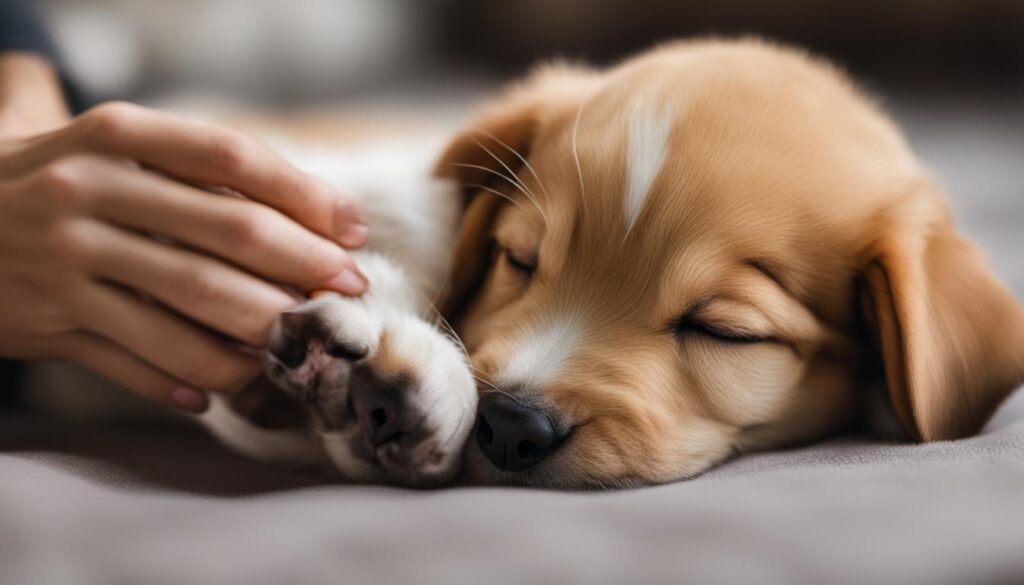
Tips for Calming Your Puppy
Calming a puppy may seem challenging, but with patience and methodical thinking, it can be achieved. In this section, we will provide you with practical tips for calming your puppy. These tips include identifying triggers, teaching alternative behaviors in the moment, using distractions and redirection, rewarding calm behavior, and maintaining a calm and composed demeanor yourself. By implementing these tips, you can help your puppy develop a sense of calmness and emotional maturity.
Identifying Triggers
One of the first steps in calming a hyperactive puppy is to identify their triggers. These triggers can range from loud noises, unfamiliar surroundings, separation anxiety, or even certain types of food. By observing your puppy’s behavior, you can start to recognize patterns and pinpoint specific activities or situations that cause them to become hyperactive. Once identified, you can work towards minimizing or avoiding these triggers to create a calm environment for your puppy.
Teaching Alternative Behaviors in the Moment
When your puppy starts to display hyperactive behavior, it’s important to redirect their energy towards more appropriate activities. For example, if your puppy is jumping and running around excitedly, you can redirect their attention by giving them a chew toy or engaging them in a game of fetch. By providing your puppy with an alternative behavior to focus on, you can help them channel their energy in a more productive and calming way.
Using Distractions and Redirection
In moments of hyperactivity, distractions can be a valuable tool in calming your puppy. You can use toys or treats to divert their attention away from the trigger or activity that is causing them to become hyperactive. For example, if your puppy starts barking excessively at the doorbell, you can redirect their attention by giving them a treat or engaging them in a training exercise. This helps to shift their focus and break the cycle of hyperactivity.
Rewarding Calm Behavior
Positive reinforcement is essential when it comes to calming a puppy. Whenever your puppy displays calm or relaxed behavior, make sure to reward them with praise and treats. This helps them associate calmness with positive experiences and encourages them to repeat these behaviors in the future. Consistently rewarding calm behavior will reinforce the idea that being calm is desirable and lead to a more naturally calm demeanor over time.
Maintaining a Calm and Composed Demeanor Yourself
As a puppy owner, your own energy and demeanor can greatly influence your puppy’s behavior. Dogs are highly intuitive and can pick up on your emotions. If you are anxious or stressed, your puppy is more likely to mirror those feelings and become hyperactive. That’s why it’s important to maintain a calm and composed demeanor when interacting with your puppy. Take deep breaths, speak softly, and avoid sudden movements to create a serene atmosphere that encourages your puppy to stay calm.
Conclusion
Raising a quiet calm puppy requires dedication and consistency. By following the expert tips provided in this article, you can create a peaceful home for both you and your puppy. Understanding and managing puppy excitability is key to promoting a calm demeanor.
Implementing calming techniques such as distraction, redirection, and reward-based training can help your puppy develop emotional maturity. It is important to create a serene environment for your puppy’s development by providing them with a safe and comfortable space.
With proper calm puppy training and socialization, your puppy will learn to maintain a calm demeanor and become a well-behaved dog in society. Embrace the journey of raising a quiet calm puppy and enjoy the peaceful moments that come along with it.
FAQ
How can I calm my hyperactive puppy?
Calming a hyperactive puppy requires a combination of identifying triggers and implementing calming techniques. Start by identifying situations or events that trigger your puppy’s hyperactivity and try to avoid or minimize them. Additionally, you can teach your puppy alternative behaviors, such as a sit or stay command, to redirect their energy. Using distractions, such as puzzle toys or treats, can also help redirect their focus. Rewarding calm behavior with praise and treats reinforces the desired behavior. It is also essential to maintain a calm and composed demeanor yourself, as puppies often mirror their owner’s energy.
How do I create a serene environment for my puppy?
Creating a serene environment for your puppy involves several key elements. First, ensure that your puppy has a designated safe space where they can retreat to when they need quiet time. This can be a crate or a specific area in your home. Establish a consistent daily routine that includes regular meals, playtime, and rest periods. Providing plenty of mental and physical stimulation through interactive toys, puzzles, and daily walks can also help your puppy maintain a calm demeanor. Lastly, create a calm and peaceful atmosphere by keeping noise levels low and maintaining a positive and relaxed energy in your home.
How can I teach my puppy to be calm and composed?
Teaching your puppy to be calm and composed requires patience and consistent training. Start by providing your puppy with regular exercise to help burn off excess energy. Implement training exercises that promote impulse control, such as teaching your puppy to wait patiently for their food or to sit and stay before going outside. Use positive reinforcement techniques, such as treats and praise, to reward calm behavior. Consistency is key, so be sure to reinforce the desired calm demeanor consistently and avoid inadvertently rewarding or encouraging hyperactivity.
What should I do if my puppy becomes overly excited or anxious in new situations?
If your puppy becomes overly excited or anxious in new situations, it is important to remain calm and help them gradually acclimate. Introduce new environments and experiences slowly, starting with familiarizing them with the sights, sounds, and smells from a distance. Gradually increase their exposure over time, always ensuring they are comfortable and not overwhelmed. Use positive reinforcement to reward calm behavior during these new experiences. If your puppy becomes overly anxious, provide reassurance and a safe space for them to retreat to. Patience and consistency are key when helping your puppy overcome new situation anxiety.

